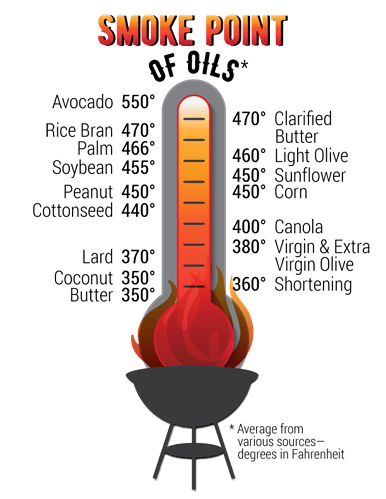I think I’ll stick with coconut oil… 
Lard instead of butter
I must agree. The mix of good animal fat with sugar and flour doesn’t excite me however the fact that chemistry finds these combinations is interesting.
Correct. I guess having this great community here makes us to go a bit further in our journey of learning good knowledge and unlearning the bad ones that we’ve been thought so far.
When I render tallow, it’s over very low heat. It generally takes quite a while. You start with suet, and gradually the fat melts out of the connective tissue, which gets strained out at the end. I pour the rendered fat into containers and let it solidify.
I never tried to make specifically lard and lots of it. I just fry my meat quickly and most of the fat stays in but it’s my meal  I am happy to get a little lard for my occasional scrambled eggs.
I am happy to get a little lard for my occasional scrambled eggs.
I imagine making lard properly takes a long time, sadly I never saw it done. Next time I will ask the local pig farm lady, we like to chat 
Thanks, now I know this  I still hate tallow with a passion (well no, I totally ignore its existence normally) but I like to know things.
I still hate tallow with a passion (well no, I totally ignore its existence normally) but I like to know things.
People use little cubes for lard but the byproduct still has very much fat in it, it’s just a nice snack so not a problem. But it makes sense to use tiny fat pieces… I may try that but IDK when and using what as I get my tiny lard from fatty meat as I wrote and it’s enough for me. But the fattiest meat I use has very big fat pieces and I usually use them for lard making. They still don’t release most of their fat so I will try to cut them up more next time! Another kitchen machine to clean but I will survive. Oh and I can’t avoid straining then as with the cubes… BUT I will get much more lard and that will last for months…
I just wish I could afford lots of added fat. I would gladly eat lots of lard, at least sometimes. Maybe one day.
I got interested in the chemistry of soap at one point, and something I learned is that the famous harshness of “lye” soap is because of the animal fat, not the lye. All soap is made from lye, apparently; the combination of the lye and some type of fat in the presence of heat is what results in saponification. Castile soap, when it was invented centuries ago, was a vast improvement over tallow-based soap, because it was made from olive oil, not tallow. As a result, using soap became much more popular.
I usually freeze my fat using rubber molds, so I can just take out some small amount of fat when I need it. We have a lot of different size molds, though, so I can make big or small chunks.
I make my own soap with tallow, olive oil, and coconut oil. It is wonderful and very sudsy. There is no harshness.
I do have to let it age for about six week. That is supposed to make sure all the lye is neutralized. If one doesn’t wait long enough, the pH of the soap is too high and it can be harsh.
I make my own soap also from palm oil, coconut oil, olive oil, almond oil and shea butter. Until the meth heads came along cooking their own meth you could buy lye (sodium hydroxide) in the grocery store packaged as drain cleaner. I source mine from a chemical supplier.
And yes, it has to cure for 6 weeks or the high pH is harsh on your skin. Soap continues to saponify and react after it is made.
I also make castille soap and then grate it up to make laundry soap, along with baking soda and 20-mule team borax. Then I put it through my large food processor to grind up the flakes of soap to make a powder.
@Geymakh , I don’t worry about it too much. I use butter for cooking at low heat (eggs), and lard for cooking at medium heat (meat).
I have a bottle of olive oil in the cupboard, that hardly ever gets used.
Here is a graphic showing smoke points of various cooking fats. But note that the issue is not just the smoke point but also the polyunsaturated fat content, because many polyunsaturates are unstable and can be damaged even before the heat reaches the oil’s smoke point. Those damaged oils cause problems in the human body.

